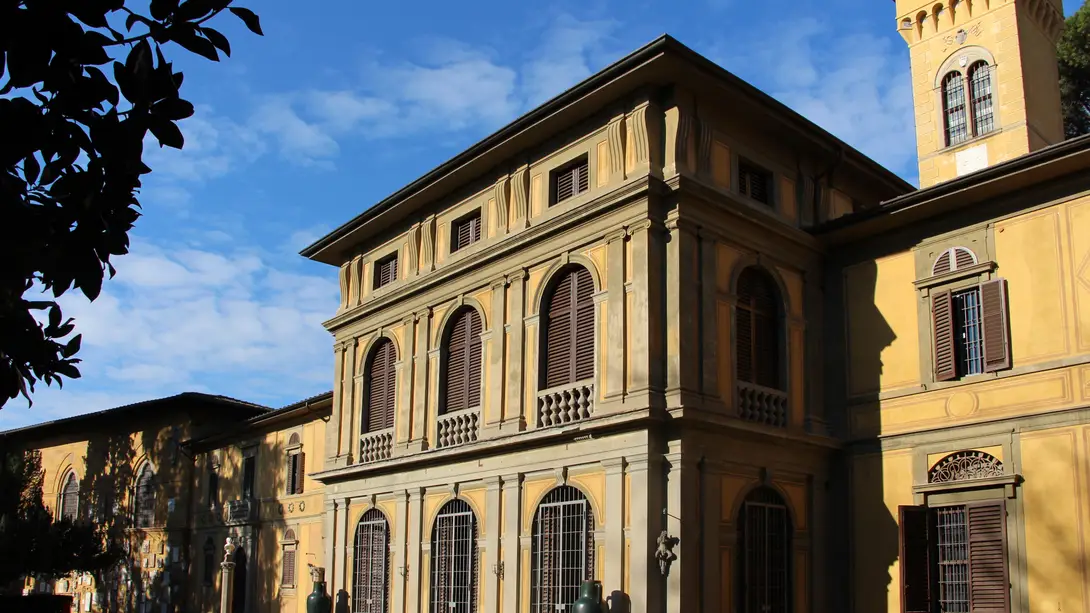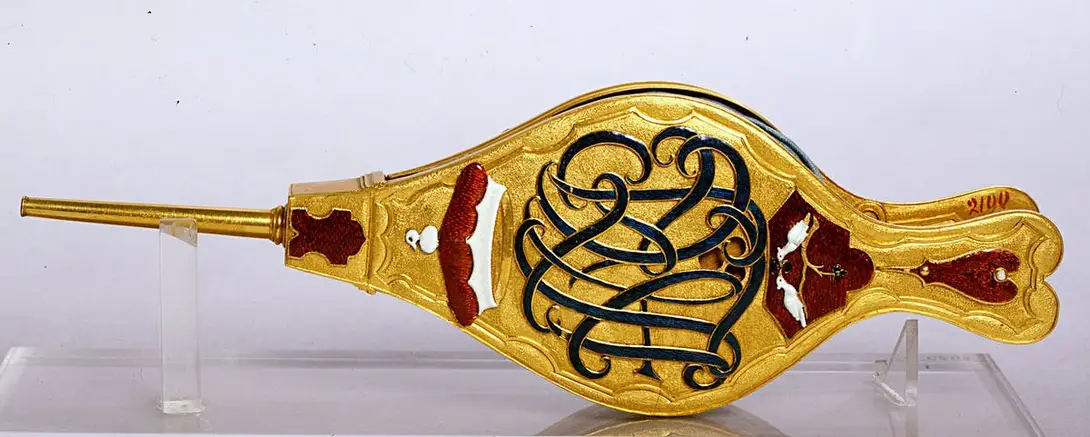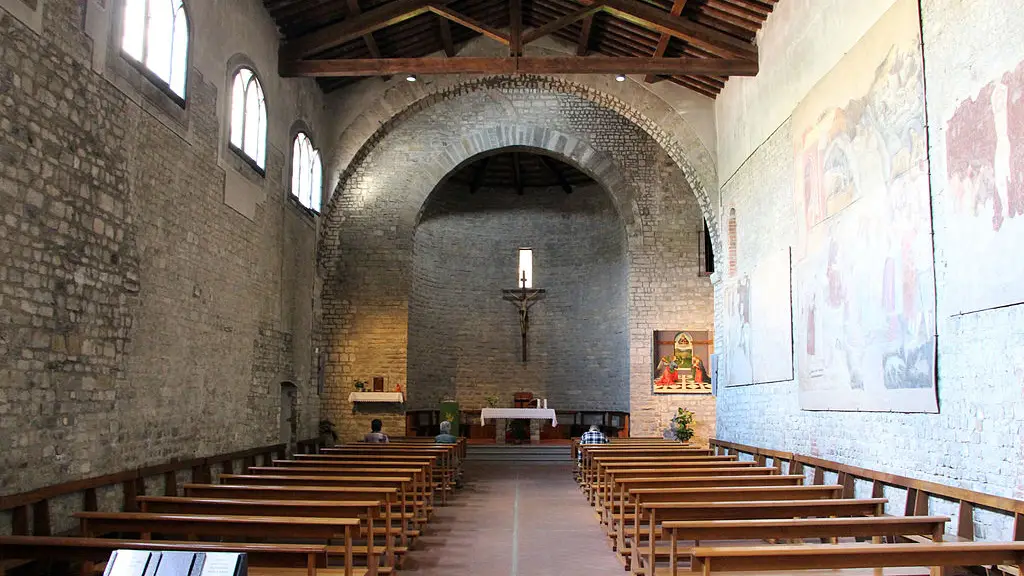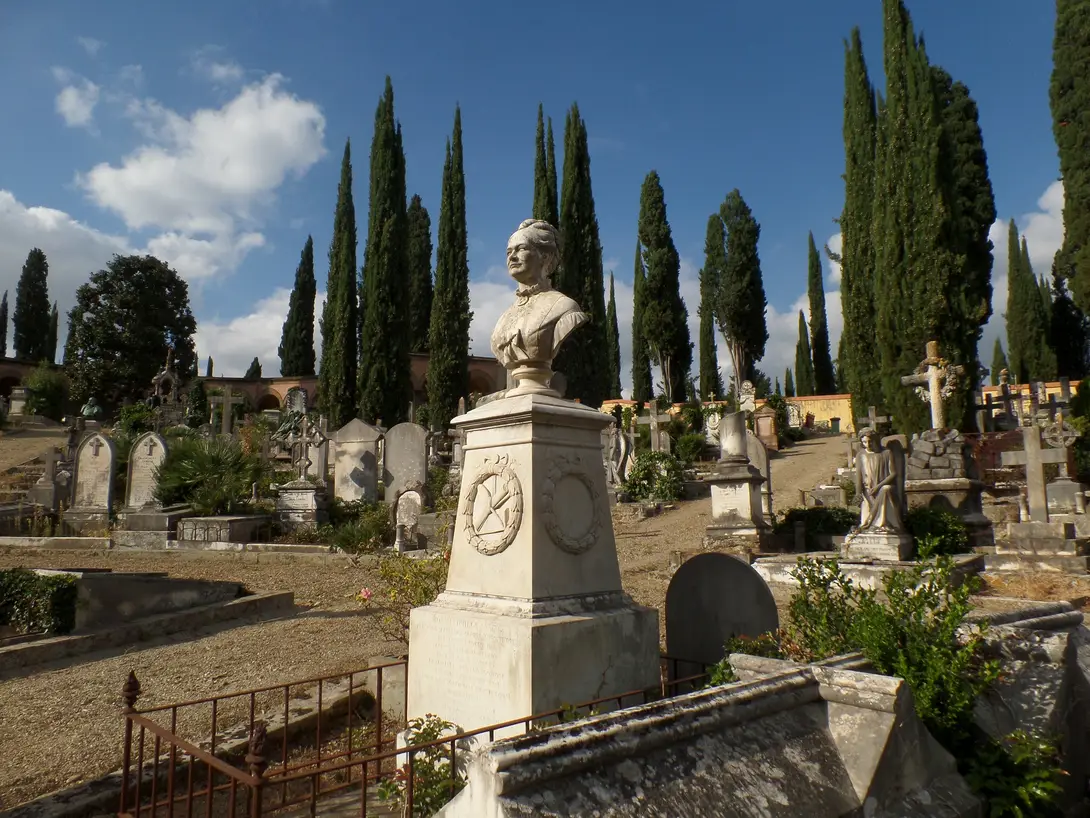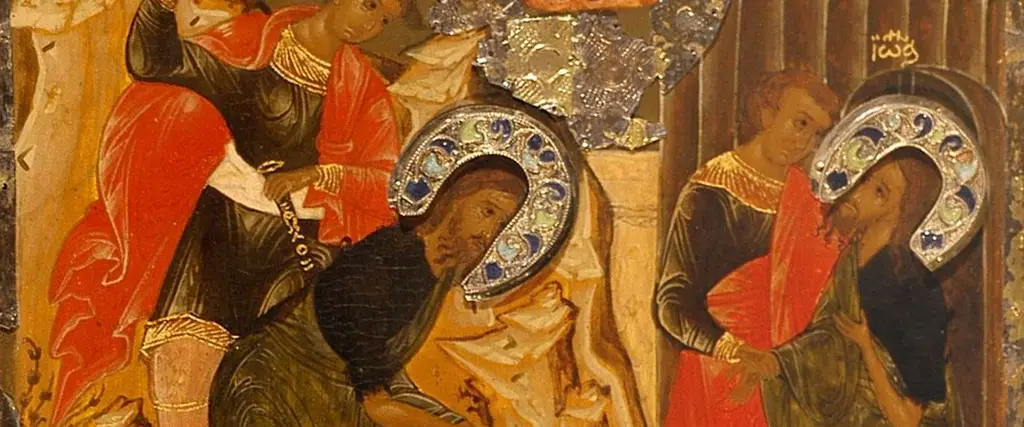
Russia in Florence
Florence has always been tightly connected with Russia throughout the centuries.
An ideal itinerary representing this bond must necessarily start from the beautiful Russian Orthodox Church situated in Via Leone X, close to Fortezza da Basso.
Starting from the 19th century, many important Russian artists and writers have spent part of their life in Florence. Fedor Dostoevskij - an assiduous attender at Gabinetto Vieusseux - finished writing “The idiot”, during one of his long stays in the city (1869), in a flat right in front of Pitti Palace. Pëtr Il'ič Čajkovskij, who also loved Florence, finished composing “The Queen of Spades” in Villa Bonciani, his house in via San Leonardo 64, where he spent many years. More recently, famous director Andrej Tarkovskij was also highly attracted to Florence and Tuscany. Many marble plaques affixed to the walls of Florentine houses commemorate these people. A lot of Russian personalities, part of the local Russian community, are buried in the Cimitero agli Allori.
The Demidoffs, rich Russian industrialists, moved to Florence in 1819 and left many traces of their power and influence in the city and its neighborhoods, including the Medici park of Pratolino, named Villa Demidoff after its owners, and the monument by Lorenzo Bartolini, which can be admired in Piazza Demidoff in Oltrarno district. Not much is left of their magnificent Villa di San Donato in Polverosa (in Novoli district), but many of its treasures can be still admired in the Orthodox Church as well as in the Stibbert Museum.
In addition, not to miss, a permanent exhibition of Russian icons has recently opened to the public in Pitti Palace.
If you are interested in an introduction to our city in Cyrillic, visit this link.
Comune di Firenze
The places
Stages
Pratolino Medici Park
On the road connecting Florence with Bologna is a beautiful park that is also a Unesco heritage site: the Parco Mediceo di Pratolino
In the second half of the 16th century, Francesco I de’ Medici commissioned Bernardo Buontalenti to build a villa (later demolished) and a surrounding park; the latter attracted great interest at the time because of the unusual artificial grottoes, water tricks and statues, and was immediately described as “the garden of marvels”.
After Francesco’s death the park had a chequered history until it was bought by the Russian prince Paul Demidoff in the 19th century. He restored the remaining Renaissance elements, including Giambologna’s colossal Apennines statue overlooking a small lake. Inside the statue there used to be grottoes with decorative features, frescoes and water tricks. The decorations have been lost, as have those in Cupid’s Grotto, although there are still a few sculptures, pondsand grottoes dotted around the park. The only building that has survived to the present day without major modification is the chapel, built by Buontalentiin 1580.
This park is the ideal place for a day out with your children: you can have a picnic on the large lawns, walk or have fun at the playground and also walk your dog.
The park can be reached by bus 25A or 307A, direction Pratolino.
Russian Orthodox Church of the Nativity of Christ
Not far from Fortezza da Basso, the Russian Orthodox Church of the Nativityof Christ was built at the end of the 19th century, strongly desired by the daughter of Tsar Nicholas I. The crypt (lower church) - dedicated to San Nicola Taumaturgo - is reached through a Narthex by a staircase leading to the upper church, with a domed vault and a series of characteristic "onion domes" covered with polychrome scales of majolica.
The interior of the upper church is particularly bright, mainly frescoed by Russian painters (life of Christ, saints of Russian Orthodoxy, evangelists, early Christian symbols). The precious iconostasis that divides the space between believers and celebrants is contemporary with the construction of the church, while the old iconostasis of the crypt and a number of valuable icons and liturgical furnishings come from the Demidoff Chapel in San Donato in Polverosa. Demidoff was a rich family of Russian industrialists, moved to Florence in 1822, and also owner of the Medici complex in Pratolino.
Stibbert Museum
The Stibbert Museum, conceived by Frederick Stibbert (1838-1906), is a rare example of a 19th-century museum: an extraordinary collection of arms, armour and works of art is displayed in a series of rooms whose evocative layout was designed to evoke the atmosphere of the period and the places of origin of the various objects.
The collections include weapons, armour, costumes, objects of furniture and applied art, tapestries and paintings from the 16th to the 19th century, displayed in 60 rooms. The Sala della Cavalcata (the riding hall) is remarkable, where life-size European and Oriental knights are arrayed; the Japanese section includes, in addition to arms and armour, bronzes, costumes, lacquerware: it is one of the most important in the world outside Japan.
The park surrounding the villa, dotted with pavilions, statues, fake ruins and even a small Egyptian temple, reflects Stibbert's adherence to the romantic and eclectic taste typical of his time.
Treasury of the Grand Dukes - Pitti Palace
The Treasure of the Grand Dukes (formerly known as the Silver Museum) occupies the sumptuous frescoed rooms of the Summer Apartment of the Medici and Lorraine Grand Dukes, located on the ground floor and mezzanine of the Pitti Palace.
The Medici Treasury, the fruit of their collecting, is housed here: from the semi-precious stone vases of Lorenzo the Magnificent to the cameos and intaglios of Cosimo I, from the rock crystals of Francesco I to the ambers of Maria Magdalena of Austria - together with the jewellery of Anna Maria Luisa, the last heiress of the lineage. Also of great value is the collection of oriental ceramics. ‘The Salzburg Treasure, on the other hand, was brought to Florence by the Lorraine Grand Dukes (in particular Ferdinand III). The Hall of Donations displays a collection of jewellery made from the 18th century to the present day by prestigious European and Italian manufacturers.
Particularly fascinating is the Salone di Giovanni da San Giovanni (named after the main painter who frescoed this room). The pictorial cycle, painted starting in 1635 on the occasion of the marriage between Ferdinando II de‘ Medici and Vittoria della Rovere, is a celebratory allegory of the Medici dynasty: on the side walls is depicted the Greek culture that, having left Athens after a long pilgrimage, arrives in Florence (’new Athens') welcomed by Lorenzo the Magnificent. On the ceiling, an allegory of the Grand Ducal wedding. The frescoes were completed in 1642 by Cecco Bravo, Ottavio Vannini and Francesco Furini.
The decorations of the later rooms, executed by 17th-century artists Mitelli and Colonna, are among the earliest and most eloquent examples of quadraturism (grandiose painted architectures aimed at illusionistically expanding space).
Chiesa di San Donato in Polverosa
This church of ancient origins (1088) derives its unusual name from the Augustinian friars, called "dusty" (for the gray color of their habit), who settled there before the arrival of the Community of the Humiliated. The whole complex passed subsequently to the Cistercians from whom it depended until the early nineteenth century when, following the Napoleonic suppressions of the Religious Orders, it was purchased by the Demidoff, Russian princes who transformed it into part of their Villa. After a series of interventions, the Church was reopened to the public in 1963. The interior, with a single nave and a trussed ceiling, houses numerous works of art, including some valuable fourteenth-century frescoes (Cenni di Francesco, Matteo di Pacino) and an altar panel by Raffaellino del Garbo (16th century).
Evangelical Cemetery "Agli Allori"
The Allori Cemetery is an extraordinary place where you have the opportunity to feel art and history.
Inaugurated in 1878, the Cemetery was created to give a proper burial to non-Catholics not welcomed by the city cemeteries. Since 1970 it has been open to all religions and lay people.
There are numerous characters who rest in this monumental cemetery, which can be considered a real open-air museum: from Frederick Stibbert, a well-known art collector, to the Italian writer Oriana Fallaci.


